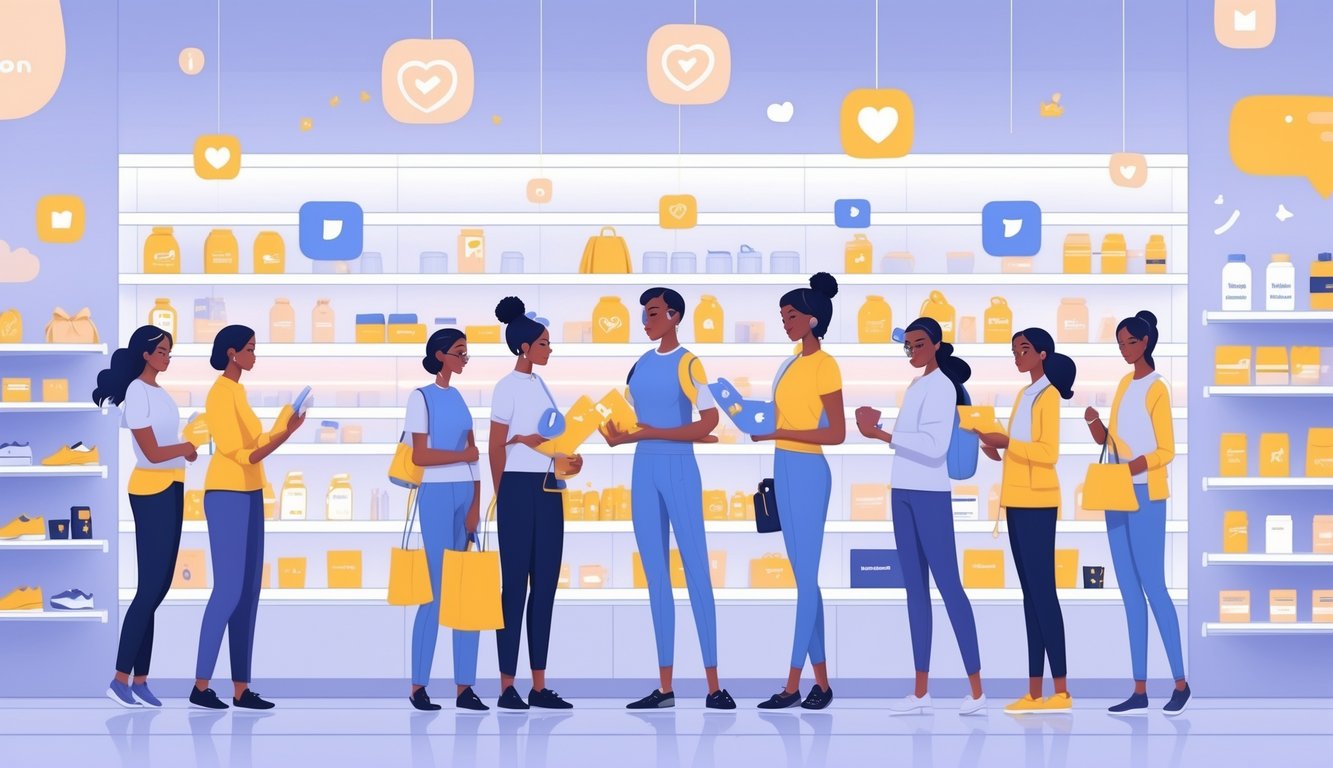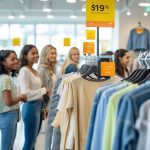
Optimizing Marketing Strategy for Value-Oriented Shoppers
Okay, so everyone’s obsessed with “value,” but most brands don’t even bother tweaking their strategy. Value shoppers—call them what you want—aren’t fooled by flashy buzzwords. They want actual savings, proof, and control, or they’re out. It’s not about slapping SALE everywhere; it’s about showing you get what they want and why.
Personalization and Data-Driven Insights
Personalization. Ugh. I’m sick of the word, but it’s the one thing that actually keeps showing up in every influencer marketing report I skim. I cornered a CMO at a trade show—he grumbled, “Data’s ROI, gut feeling gets you fired.” I get it: the 2025 Influencer Marketing Benchmark says agencies that segment value offers see ROI jump 30%. But if I get three shoe ads and I don’t wear shoes (I do, but you get the point), what’s the point?
Here’s where people blow it: they hoard data but never use it well. My Google searches, my abandoned carts, my DMs with influencers—there’s a goldmine for targeting, but brands keep missing. If you want my attention, use what you know (I’m cranky, I only buy with free shipping), and segment by behavior, not just demographics. Targeting lookalikes in 2024 is a joke. Set up a rule: if I leave something in my cart, send me a discount. Done. Sometimes I wonder if anyone’s even checking analytics, because most emails I get are totally tone-deaf.
Check your real conversion metrics, not the vanity stuff. It’s dull, but it’s the only thing I trust. If my aunt says she only shops when the numbers look good, I believe her over any analyst—unless that analyst drops real proof into my feed at the exact right moment.
Increasing Brand Awareness in a Competitive Landscape
Brand awareness is the new obsession, as if a logo alone will yank people from Zara to Dollar Shave Club. Value shoppers? They want deals, transparency, maybe a whiff of being “in” on something.
Leveraging Social Media Influencers for Visibility
If your feed isn’t full of random celebs flogging protein bars and “miracle” jeans, are you even online? Nielsen says 71% of people trust influencer recs over banner ads, which is wild, but also, who actually trusts anyone these days? My friends roll their eyes at “influencers,” but if a stylist breaks down a $35 acne serum’s ingredients on TikTok, I remember the brand. The influencer? Maybe. My memory is trash.
And platforms keep shifting. Instagram’s Collabs for Reels means brands and creators share a feed—bigger reach, supposedly. My cousin panicked when his “micro” campaign hit 30K likes and zero sales. Nothing’s straightforward. One spreadsheet, a cold email, and suddenly you’re begging an influencer at midnight to use the right hashtag.
It’s not about pumping out more codes. My last campaign? I handed over creative control, stopped micromanaging, and watched engagement spike—not just likes, but comments, shares, saves. “Local” is so underrated. Brands using local influencers got a 22% lift in regional engagement (Influencer Marketing Hub, March 2025), which is dry data but basically means someone’s grandma bought face wash. No magic formula. Just a lot of experimenting, meme fails, and hoping you don’t accidentally send your pitch deck to the wrong DM.
Fostering Loyalty and Retention Through Influencer Collaboration
What’s still driving me up the wall: brands keep recycling the same tired discount codes, missing that trust is messy. An influencer’s honest morning routine or a random story about why they switched brands does more for loyalty than any “20% OFF” button. It’s the weird, unfiltered stuff—like a creator blurting out why they bailed on Brand X mid-Q&A—that actually makes value shoppers stick around and, weirdly, subscribe.
Turning Value Shoppers Into Brand Advocates
When I ran a launch for a mid-tier skincare brand, influencer marketing did what no banner ad or referral scheme ever could: stubbornly convinced skeptical shoppers to try a $34.99 Vitamin C serum. Dr. Neha Patel (dermatologist, big deal) said it best: “Consistency matters, not gimmicks.” A DM reply, an unfiltered try-on haul—those moments make people feel like insiders, not targets.
One honest testimonial, even from a messy bedroom, builds trust way faster than a polished product review. People DM about a $12 tee for weeks, repeating some influencer’s coffee-spill story. The real trick? Get influencers involved after the sale, spark conversations in the comments, and reward repeat engagement—not just the first click. Messy, stubborn, human stories always win over scripts. If a brand can chill out and let creators critique a feature or two, loyalty stacks up—usually when you least expect it.
The Future of Influencer Brands: Staying Ahead of Rivals
So, influencer brands. Why does everyone pretend these partnerships just materialize while algorithms play musical chairs every other Tuesday? I mean, half my group chat acts like selling out is easy, but honestly? The influencer brands that actually get people to buy stuff—they’re not just trend-hopping. They’re out here guessing what’s next, adapting on the fly, and basically dragging the whole creator economy into new territory. Or at least trying.
Embracing Trends and Anticipating Consumer Needs
I doomscroll through deal threads and, I swear, everyone’s obsessed with value now. Not the fake kind—actual ingredient lists, real discount codes, and “here’s what’s in the box” breakdowns. AI’s supposed to make everything personal, but try explaining that to someone who still wants a monthly content calendar set in stone. Forbes (yeah, I read it sometimes, don’t judge) said finding creators by topic matters more than follower count, and I’ve watched some rando with 4k followers absolutely crush a blue-check in affiliate clicks because, get this, people just believe their chaotic TikTok reviews more. Messy sells.
Social commerce is a fever dream—random push alerts, “shop now” tags, like, does anyone even click those? WPP’s report claims the fashion influencer market is about to hit $9.4 billion by 2030. Sure, maybe. Luxury brands want Gen Z to buy NFTs or whatever instead of mall coupons. I tried selling vitamin-infused highlighters (don’t ask), and weirdly, the one-off livestreams got like 12% more conversions than those perfect grid posts. Some creators I talk to? They’re lost on what “community” even means anymore, but comments still demand answers about sustainable ingredients. Not next year. Right now.



